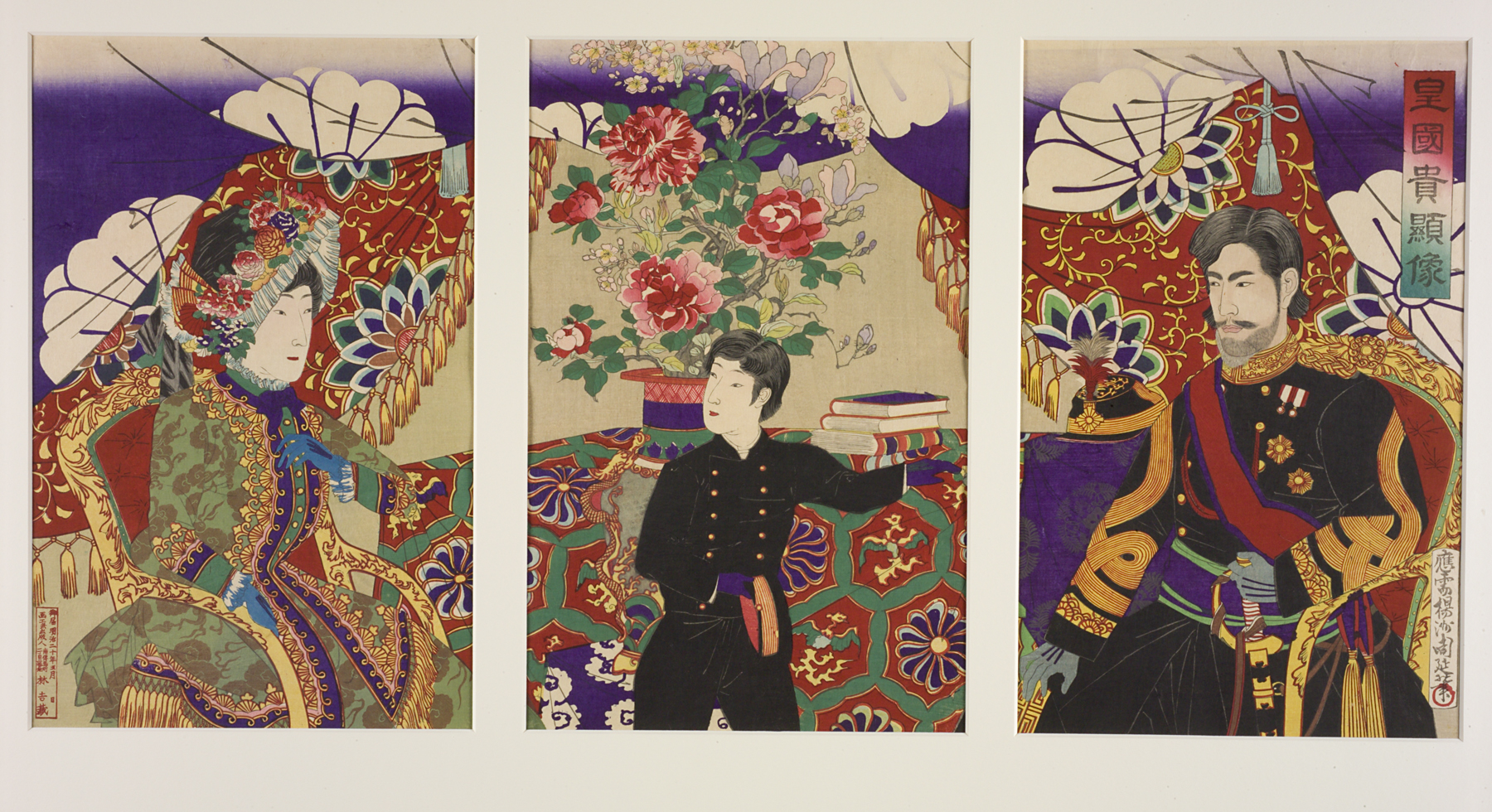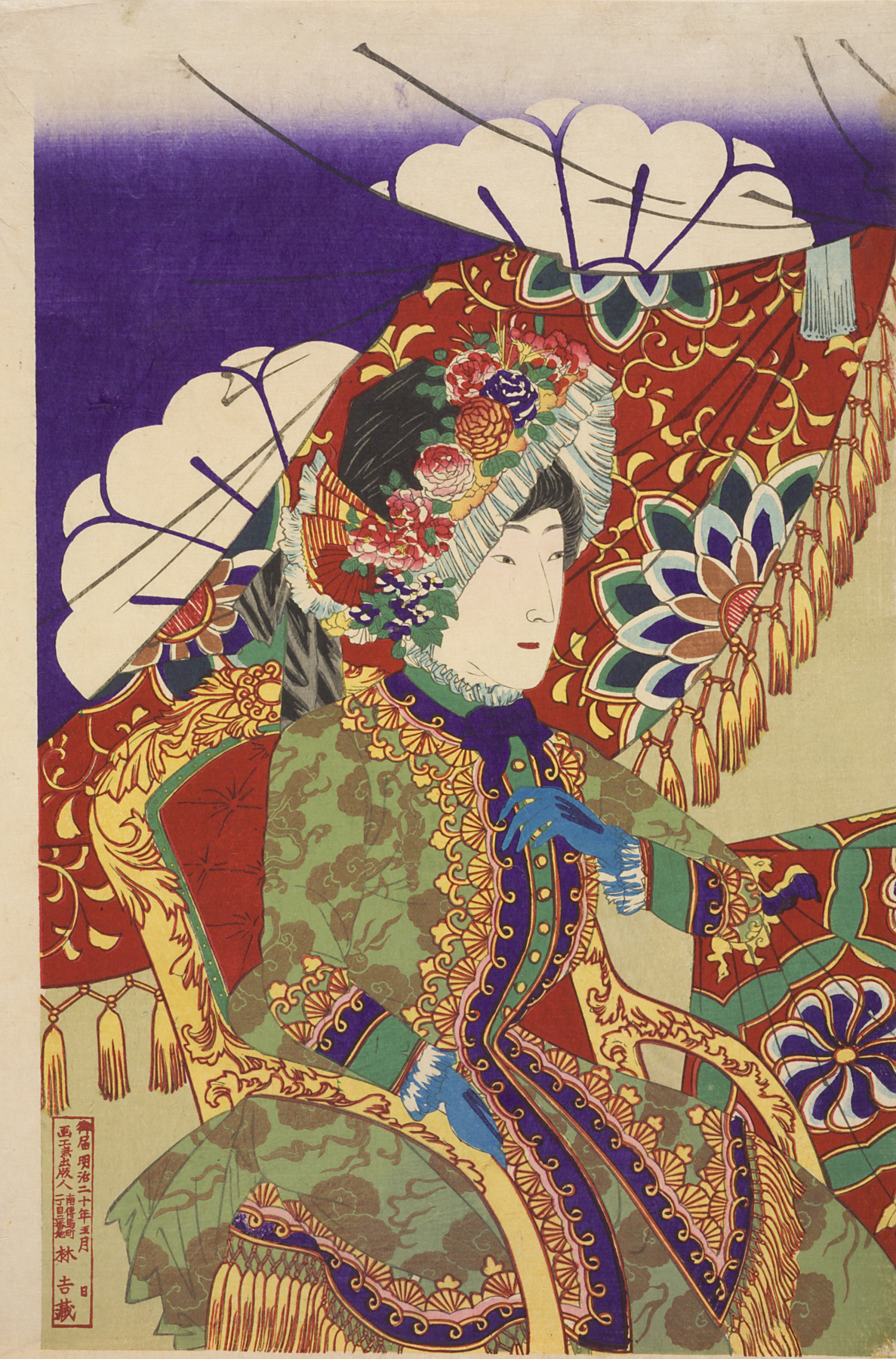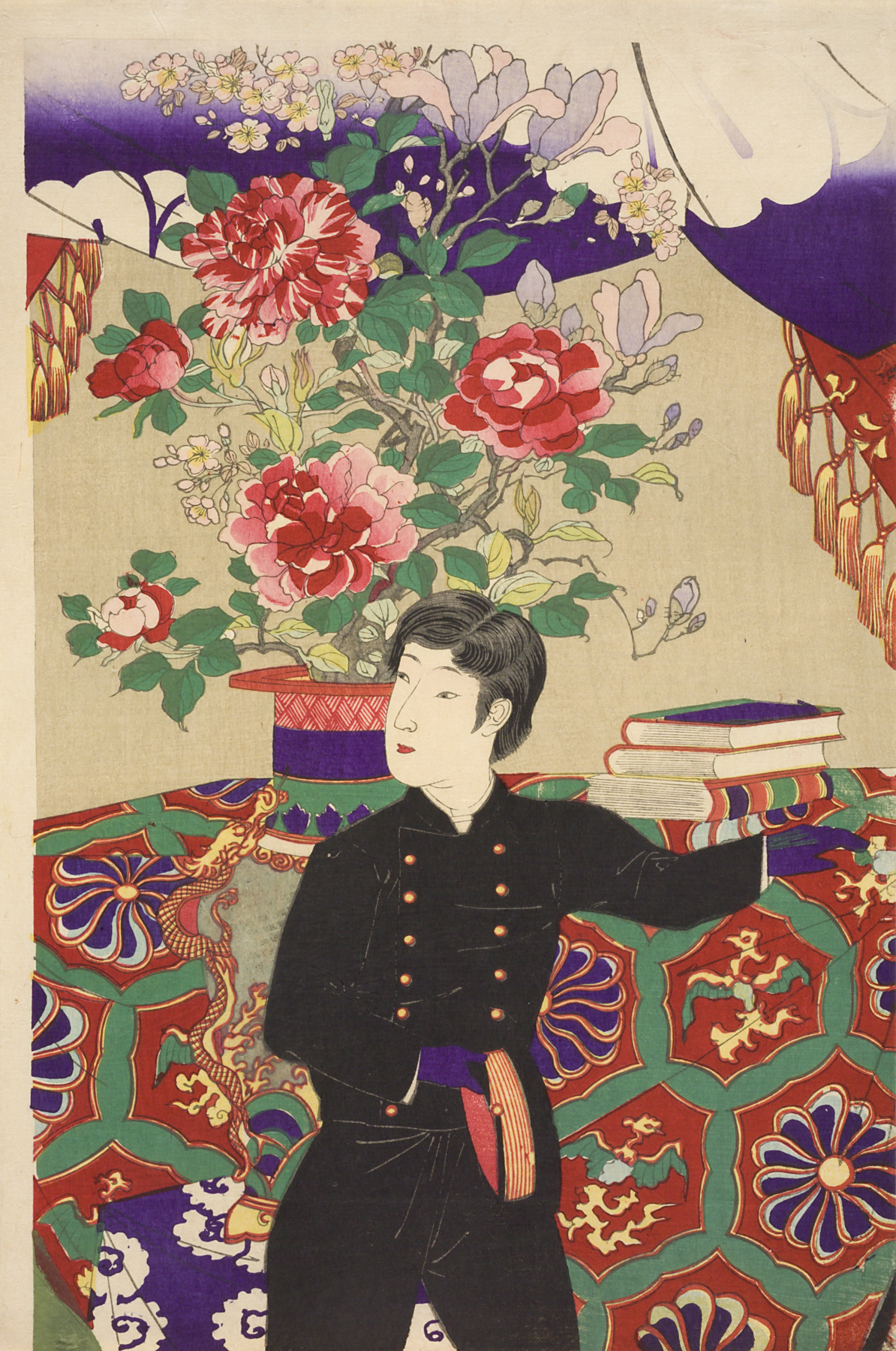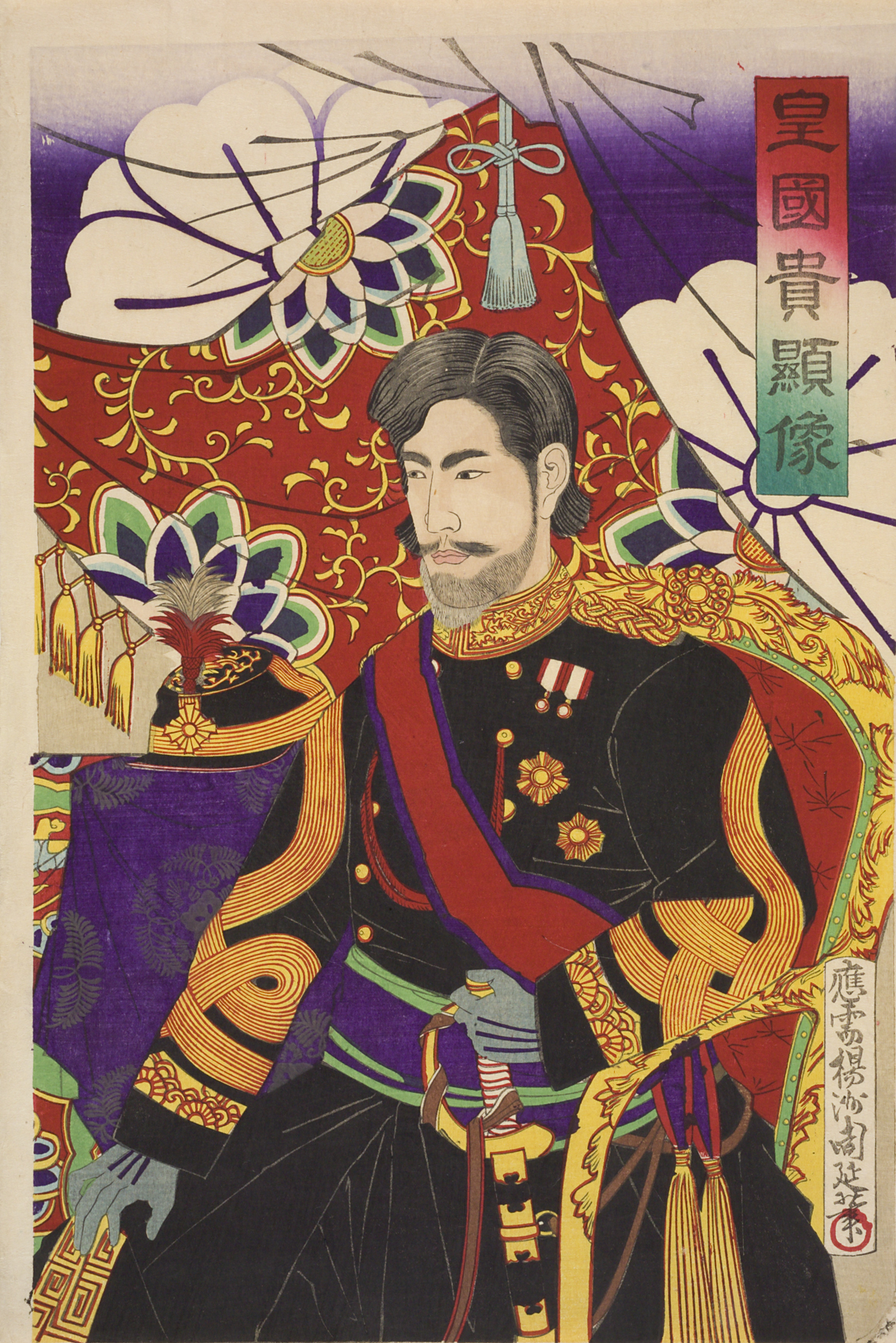The Illustrious Nobility of the Empire, Toyohara Chikanobu
Artwork Overview
Toyohara Chikanobu, artist
1838–1912
The Illustrious Nobility of the Empire,
1887, Meiji period (1868–1912)
Where object was made: Japan
Material/technique: color woodcut
Dimensions:
Image Dimensions Height/Width (Height x Width): a 365 x 236 mm
Image Dimensions Height/Width (Height x Width): 14 3/8 x 9 5/16 in
Image Dimensions Height/Width (Height x Width): b 362 x 238 mm
Image Dimensions Height/Width (Height x Width): 14 1/4 x 9 3/8 in
Image Dimensions Height/Width (Height x Width): c 365 x 240 mm
Image Dimensions Height/Width (Height x Width): 14 3/8 x 9 7/16 in
Sheet/Paper Dimensions (Height x Width): a 374 x 249 mm
Sheet/Paper Dimensions (Height x Width): 14 3/4 x 9 13/16 in
Sheet/Paper Dimensions (Height x Width): b 375 x 248 mm
Sheet/Paper Dimensions (Height x Width): 14 3/4 x 9 3/4 in
Sheet/Paper Dimensions (Height x Width): c 373 x 250 mm
Sheet/Paper Dimensions (Height x Width): 14 11/16 x 9 13/16 in
Mat Dimensions (Height x Width): 20 x 36 in
Image Dimensions Height/Width (Height x Width): a 365 x 236 mm
Image Dimensions Height/Width (Height x Width): 14 3/8 x 9 5/16 in
Image Dimensions Height/Width (Height x Width): b 362 x 238 mm
Image Dimensions Height/Width (Height x Width): 14 1/4 x 9 3/8 in
Image Dimensions Height/Width (Height x Width): c 365 x 240 mm
Image Dimensions Height/Width (Height x Width): 14 3/8 x 9 7/16 in
Sheet/Paper Dimensions (Height x Width): a 374 x 249 mm
Sheet/Paper Dimensions (Height x Width): 14 3/4 x 9 13/16 in
Sheet/Paper Dimensions (Height x Width): b 375 x 248 mm
Sheet/Paper Dimensions (Height x Width): 14 3/4 x 9 3/4 in
Sheet/Paper Dimensions (Height x Width): c 373 x 250 mm
Sheet/Paper Dimensions (Height x Width): 14 11/16 x 9 13/16 in
Mat Dimensions (Height x Width): 20 x 36 in
Credit line: Museum purchase: Lucy Shaw Schultz Fund
Accession number: 2006.0034.a,b,c
Not on display
If you wish to reproduce this image, please submit an image request










